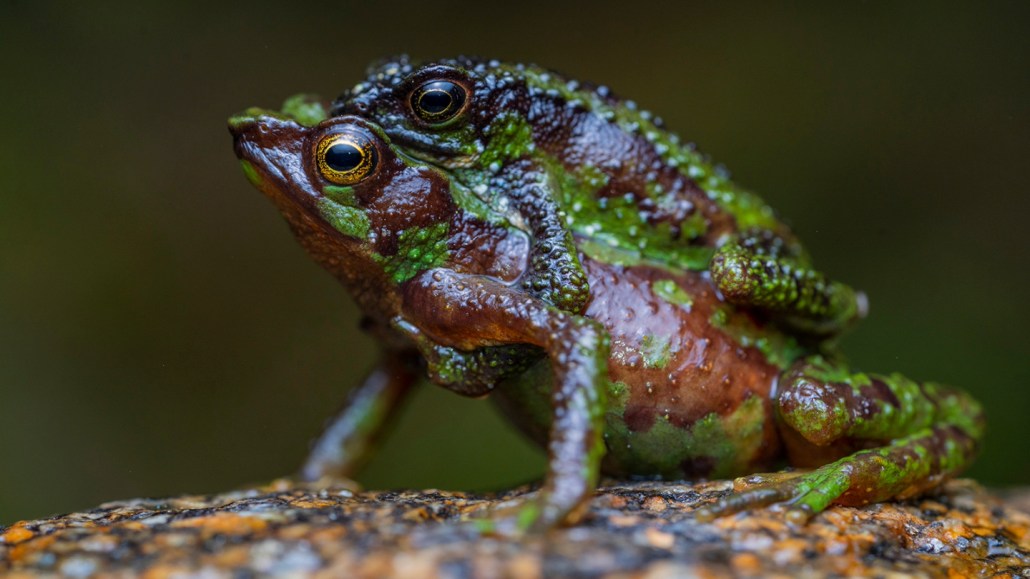
A new global assessment of amphibians reevaluated the extinction risk of species like Ecuador’s Morona-Santiago stubfoot toads (Atelopus halihelos), which were found to be critically endangered.
© Jaime Culebras/Photo Wildlife Tours

A new global assessment of amphibians reevaluated the extinction risk of species like Ecuador’s Morona-Santiago stubfoot toads (Atelopus halihelos), which were found to be critically endangered.
© Jaime Culebras/Photo Wildlife Tours